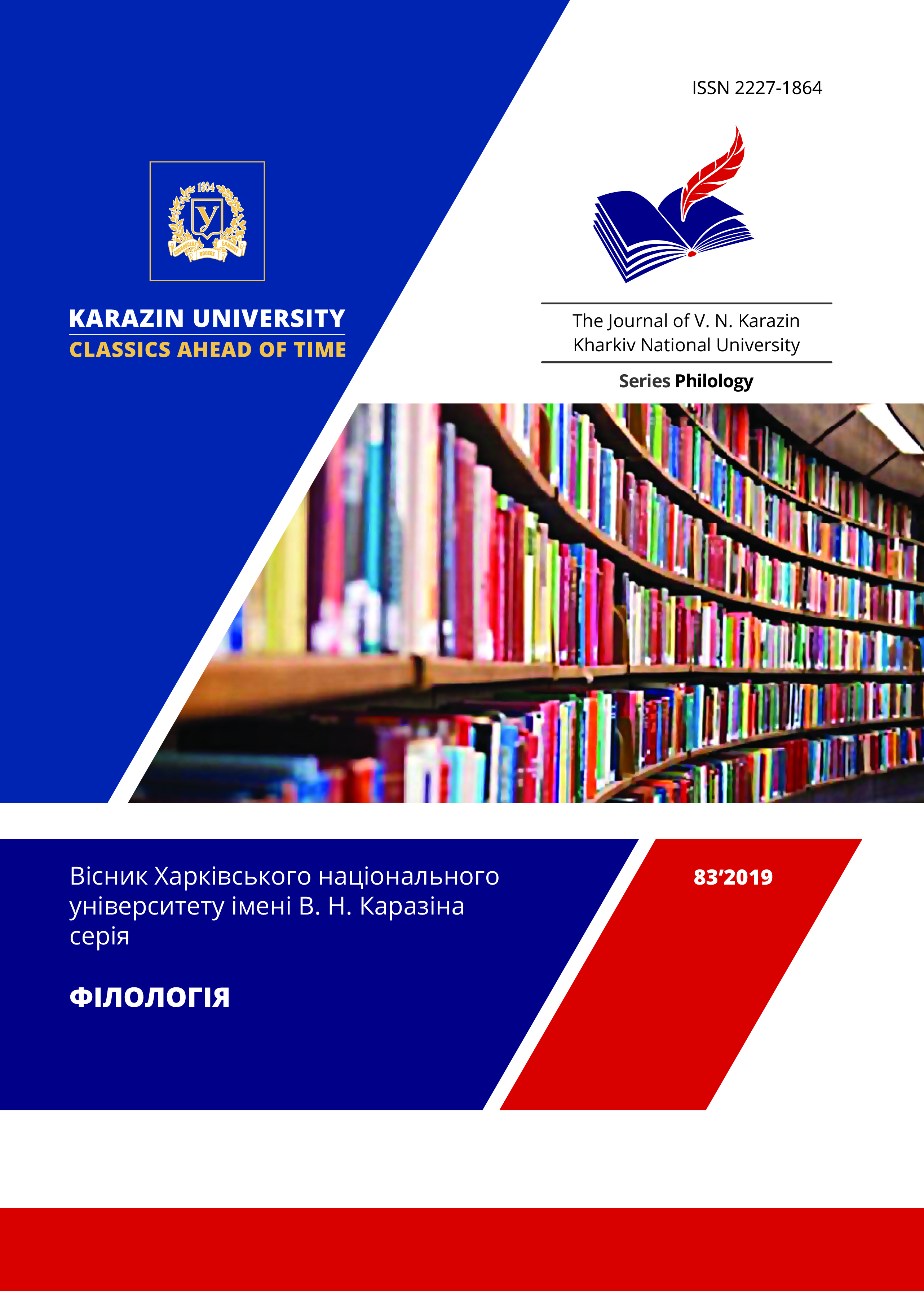Gothic tradition in N. V. Gogol's story “Portrait” (on the example of the works by G. Walpole, W. Irving, W. Scott, E. Poe)
Abstract
The article is devoted to studying of Gothic tradition influence in the N.V. Gogol’s story "Portrait". The use of a typological approach allowed the author to identify some parallels not clearly outlined in scientific literature, between N. Gogol's short story "Portrait" and G. Walpole's novel "The Castle of Otranto", the short stories "The Adventure of the Mysterious Picture" by V. Irving, "The Tapestried Chamber, or The Lady in the Sacque" by V. Scott, and "The Oval Portrait" by E.A. Poe. As a result of a comparative analysis of these texts, the author of the article identifies the narratological techniques for creating an atmosphere of terror and horror, characteristic for Gothic literature, as well as the motifs of mystery, birth curse, retribution and a living portrait.
The study also emphasizes the difference in the use of elements of Gothic poetics in terms of the evolution of the genre, from the emergence of the genre canon in G. Walpole's novel "The Castle of Otranto" to travesty in W. Irving's story by W. Irving "Mysterious portrait."
Special attention is paid to the analysis of the motif of the living portrait, which is a plot-forming for all the considered works, which allows us to trace its transformation.
In all works, the motif of the living portrait performs a story-forming function. In G. Walpole's novel the motif of a living portrait is closely connected with the motif of retribution. In the stories of W. Irving and W. Scott, this motif is a manifestation of the supernatural, Gothic element expressing the escapist nature of such literature. In the story of E.A. Poe the motif of the living portrait becomes ontological, which brings it closer to the story of Gogol.
This study concludes that the connection of Gogol's "Portrait" with Gothic tradition was not with any certain representatives of it, but was typological in nature. The author of the article focuses on Gogol's creative reinterpretation of the Gothic tradition, which led the writer to artistic discoveries in the field of poetics.
Downloads
References
Bal V.Yu. Motiv «zhivogo portreta» v povesti N.V. Gogolya «Portret» // Vestnik Tomskogo gosud. un-ta. Tomsk, 2009. № 323. S. 13‒15.
Vacuro V.E. Goticheskij roman v Rossii. Moskva: Novoe literaturnoe obozrenie, 2002. 544 s.
Gogol N.V. Sobr. soch.: v 7 t. T. 3. Povesti / komment. G.M. Fridlendera. ‒ Moskva: Hudozh. lit., 1984. 294 s.
Goticheskaya tradiciya v russkoj literature / pod red. N. D. Tamarchenko. Moskva: Izd-vo RGGU, 2008. 349 s.
Denisov V.D. Mir avtora i miry ego geroev (o rannem tvorchestve N.V. Gogolya). Sankt-Peterburg: Izd-vo RGGU, 2006. 274 s.
Irving V. Portret dyavola. Sobranie misticheskih rasskazov /sost. i komment. S. Antonova. Moskva: Eksmo, 2013. 514 s.
Mann Yu.V. Poetika Gogolya. 2-e izd., dop. Moskva: Hudozh. lit., 1988. 413 s.
Morozova T.L. Gogol i literatura SShA // Gogol i mirovaya literatura / otv. red. Yu.V. Mann. Moskva: Nauka, 1988. S. 157–187.
Po. E.A. Ovalnyj portret // Iskusstvo i hudozhnik v zarubezhnoj novelle XIX veka. / sost. I.S. Kovaleva. Leningrad: Izd-vo Leningr. un-ta, 1986. S. 407‒409.
Samorodnickaya E.I. N. V. Gogol i Ch. R. Metyurin // Goticheskaya tradiciya v russkoj literature. Moskva: Izd-vo RGGU, 2008. S. 86‒105.
Skott V. Komnata s gobelenami, ili dama v starinnom plate // Torzhestvo tmy: Goticheskij rasskaz HIH‒HH vekov. Moskva: Eksmo, 2010. S. 25‒43.
Uolpol G. Zamok Otranto. Goticheskaya povest / perevod s ang. V. Shora. Sankt-Peterburg.: Azbuka, Azbuka-Attikus, 2011. 224 s.
Hapaeva D. Neokonchennye opyty nad chitatelem: N.V. Gogol. Peterburgskie povesti // Neva. 2009. №3. S. 218-238.




